New Zealand Flag Meaning
A blue ensign with the Union Jack in the canton and four red five-pointed stars outlined in white representing the Southern Cross constellation, reflecting New Zealand's British heritage and Southern Hemisphere location.
- Continent
- Oceania
- Adopted
- 1902
- Ratio
- 1:2
- Colors
- blue, red, white
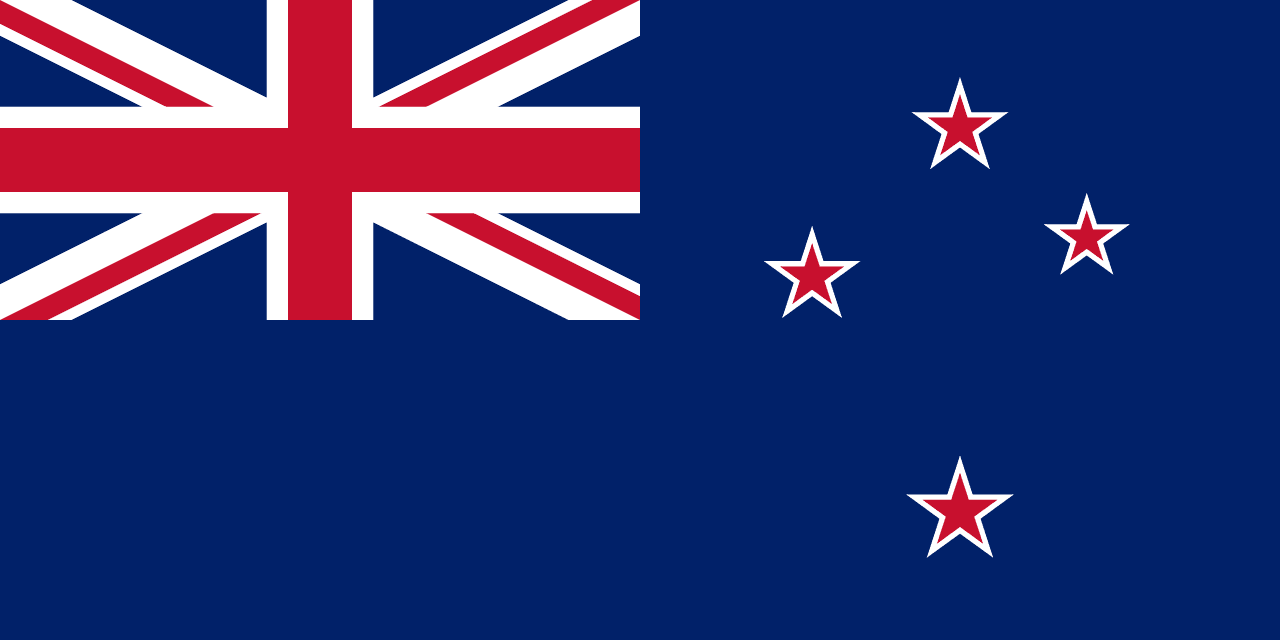
Symbolism
Union Jack: Represents New Zealand's historical ties to Britain and its status as a Commonwealth realm with the British monarch as head of state, reflecting the colonial heritage and ongoing constitutional connection.
Blue Field: Symbolizes the Pacific Ocean that surrounds New Zealand and the clear blue skies of the Southern Hemisphere, representing the country's maritime identity and island geography.
Southern Cross Stars: The four five-pointed stars represent the Southern Cross constellation (Crux), visible year-round from New Zealand and serving as a navigational guide for Polynesian voyagers and European settlers.
Red Stars with White Borders: The red color represents the British heritage while the white outlines ensure visibility against the blue field, making the constellation clearly identifiable as a distinctly New Zealand symbol.
Ensign Design: The British ensign format reflects New Zealand's naval and maritime traditions, honoring both Royal Navy heritage and the country's dependence on sea trade and fishing.
History
- 1840-1869: New Zealand used the Union Jack as its official flag after the Treaty of Waitangi established British sovereignty, though Māori chiefs had their own flags and symbols.
- 1869-1902: Various colonial flags were used, including versions with different star configurations and the letters 'NZ', as New Zealand sought a distinctive identity within the British Empire.
- March 24, 1902: The current flag design was officially adopted by King Edward VII, establishing the blue ensign with Union Jack and four Southern Cross stars as New Zealand's national flag.
- 1907: New Zealand became a dominion within the British Empire, and the flag gained greater significance as a symbol of self-governance while maintaining imperial connections.
- 1947: The Statute of Westminster Adoption Act gave New Zealand full legislative independence, though the flag remained unchanged, symbolizing continued Commonwealth membership.
- 2015-2016: Prime Minister John Key initiated a flag referendum process, with New Zealanders ultimately voting 56.6% to 43.2% to retain the current flag over a silver fern alternative.
- 1902-Present: Despite debates about colonial symbolism, the flag has remained unchanged for over 120 years, representing stability and continuity in New Zealand's national identity.
Trivia
- New Zealand's flag is often confused with Australia's flag, but New Zealand has four five-pointed stars while Australia has five stars including the larger Commonwealth Star.
- The 2015-2016 flag referendums cost NZ$26 million and were one of the most expensive democratic exercises in New Zealand history relative to population size.
- The Southern Cross constellation appears on several Southern Hemisphere flags, but New Zealand's version uses five-pointed stars while others use different configurations.
- The flag was designed before the modern understanding of the Southern Cross, which actually contains five stars, not four, but the design has remained traditional.
- During World War I and II, New Zealand forces fought under this flag, and it appears on many war memorials throughout the country honoring fallen soldiers.
- The flag appears on New Zealand dollar banknotes and coins, though the country has also featured native birds, plants, and Māori symbols on currency.
- New Zealand's flag protocol requires it to be flown from sunrise to sunset on government buildings, and it must be illuminated if displayed at night.
- The silver fern flag that was the alternative in the 2016 referendum received support from many sports fans, as the silver fern is used by New Zealand's national teams.
- Some Māori leaders have advocated for flag designs that better represent indigenous heritage, though there's no consensus on specific alternatives.
- The flag flies at half-mast on ANZAC Day (April 25) and other memorial occasions, honoring New Zealand's military history and sacrifices.
- New Zealand was one of the last major Commonwealth countries to consider changing its flag, with Canada (1965) and South Africa (1994) having made such changes earlier.
- The flag appears prominently at international sporting events, particularly rugby matches where it's displayed alongside the haka and other cultural traditions.
- Environmental groups sometimes note the irony that the flag shows no native New Zealand symbols, despite the country's unique biodiversity and conservation efforts.
- The flag referendum showed generational differences, with younger New Zealanders more likely to support change while older citizens preferred the traditional design.
- New Zealand embassies worldwide display the flag alongside the flags of host countries, representing the nation in diplomatic contexts despite ongoing identity debates.
Related Countries
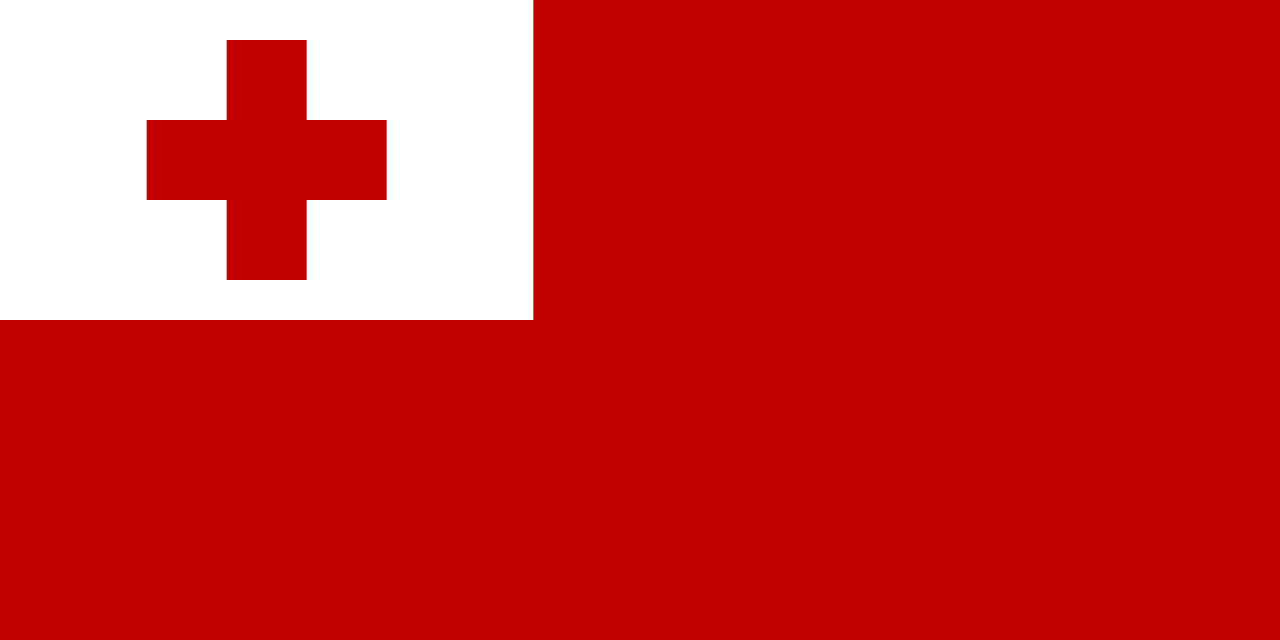
Tonga
Oceania
A red field with a white canton containing a red cross, representing the blood of Christ and the sacrifice of Jesus for mankind, the purity of Christian faith, and the deeply Christian identity of the Kingdom of Tonga as a Pacific island nation that was never colonized.
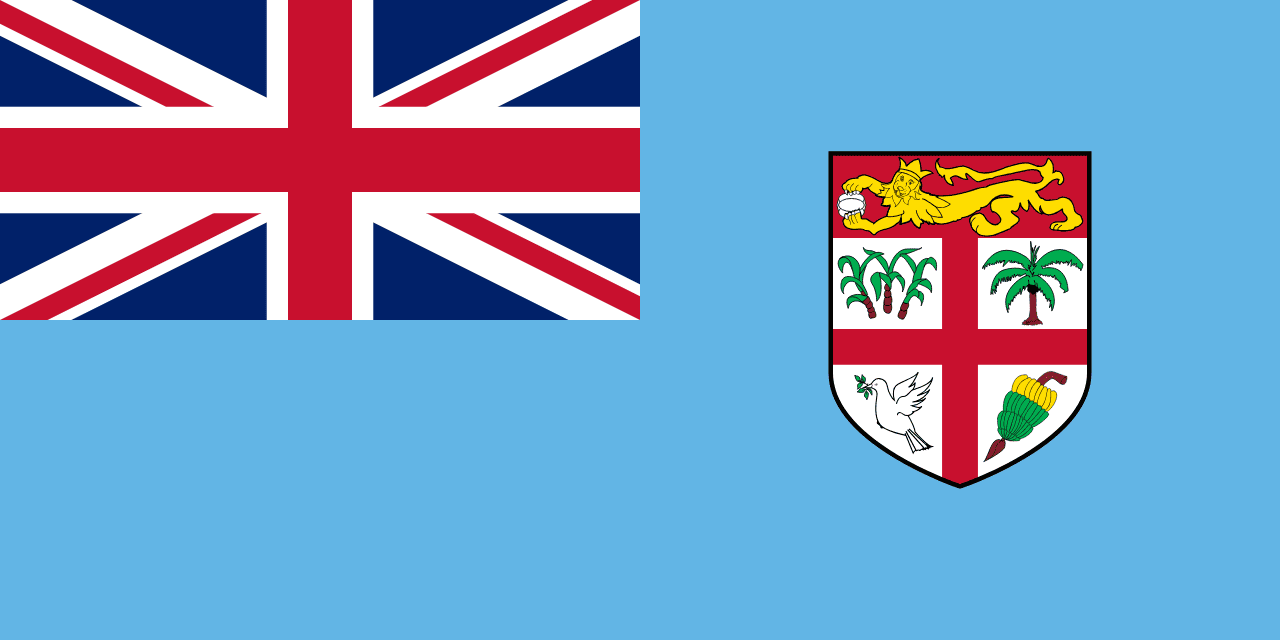
Fiji
Oceania
A light blue field with the Union Jack in the canton and Fiji's coat of arms on the fly side, representing the Pacific Ocean, British heritage, and the agricultural and maritime traditions of this island nation.
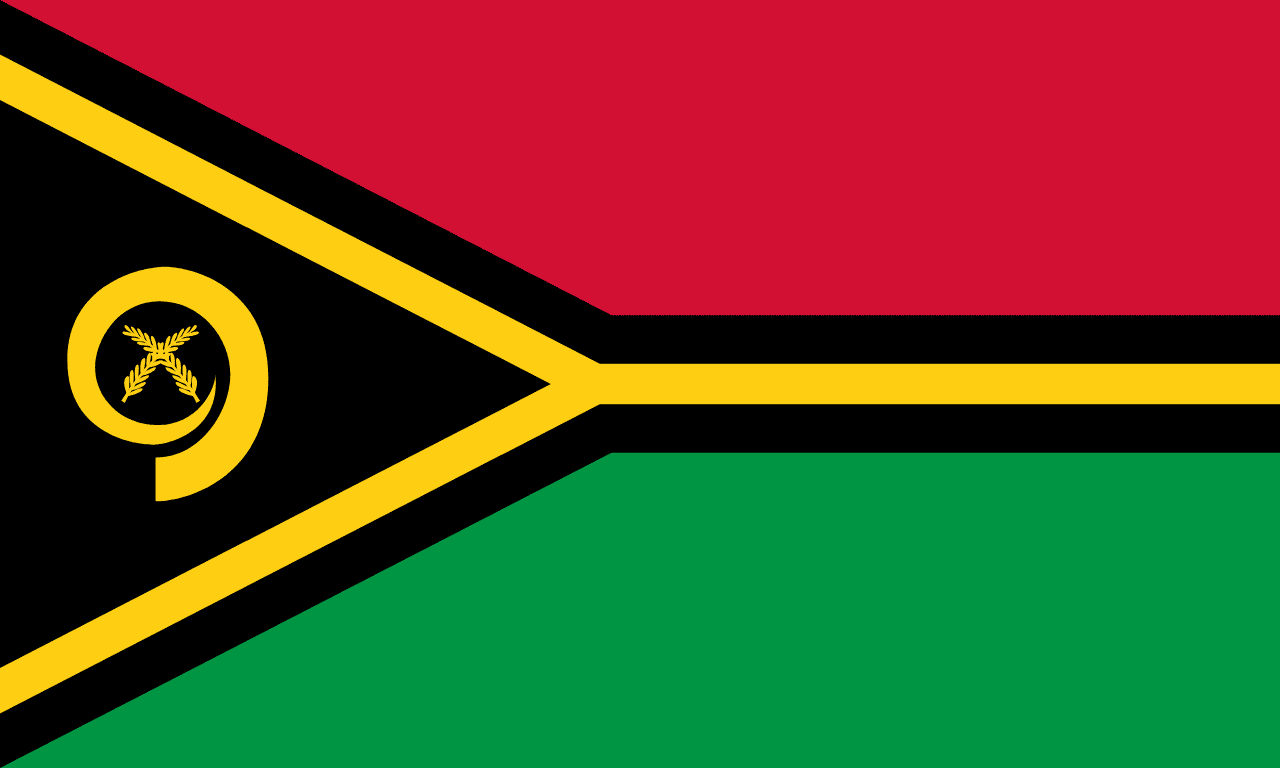
Vanuatu
Oceania
Red and green horizontal bands separated by a black stripe edged in yellow, with a yellow Y-shape extending from the hoist containing a boar's tusk and two crossed fern leaves, representing the blood of sacrifice, the rich soil, the Melanesian people, enlightenment, and traditional Melanesian values and culture.
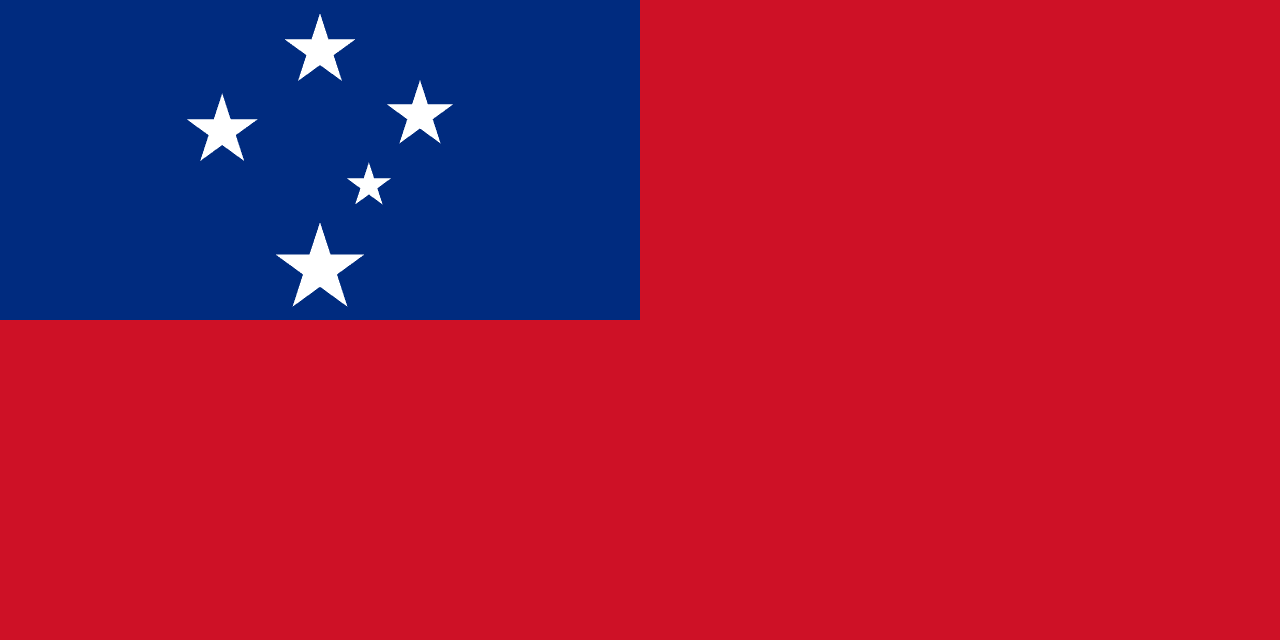
Samoa
Oceania
A red field with a blue rectangle in the upper hoist containing the Southern Cross constellation in white. The flag reflects Samoan heritage and its place in the South Pacific.
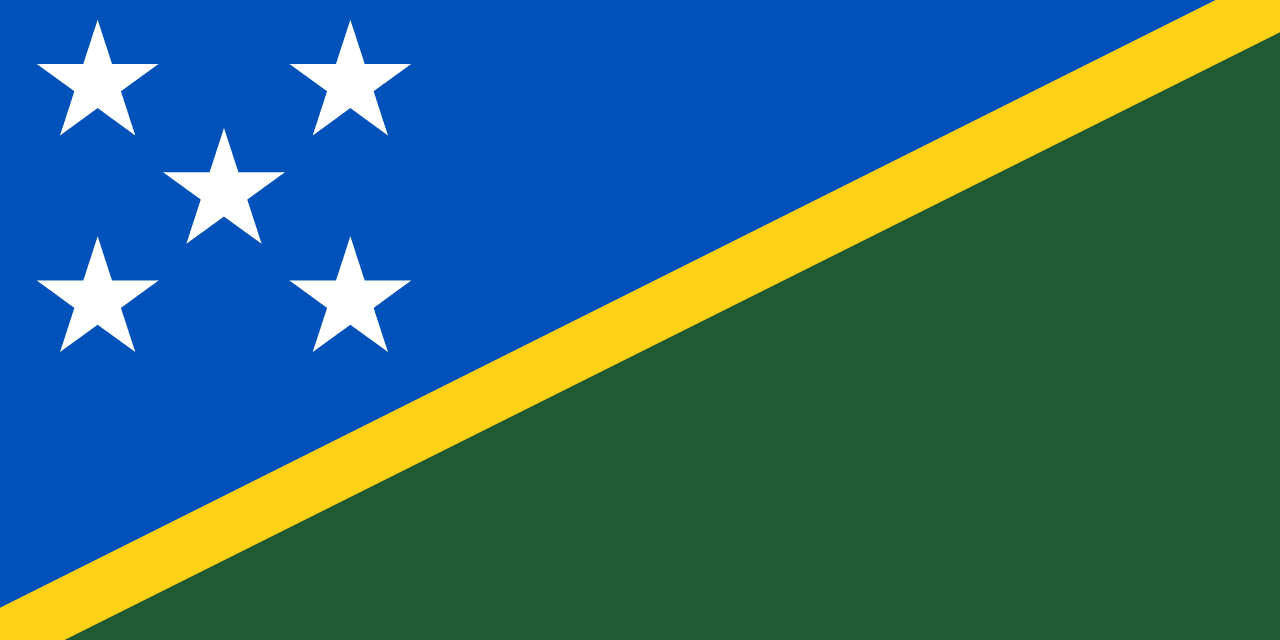
Solomon Islands
Oceania
A blue triangle in the upper hoist and green triangle in the lower fly, separated by a thin yellow diagonal stripe, with five white five-pointed stars arranged in an X pattern in the blue triangle, representing the ocean, land, sunshine, and the five main island groups of this Melanesian nation.
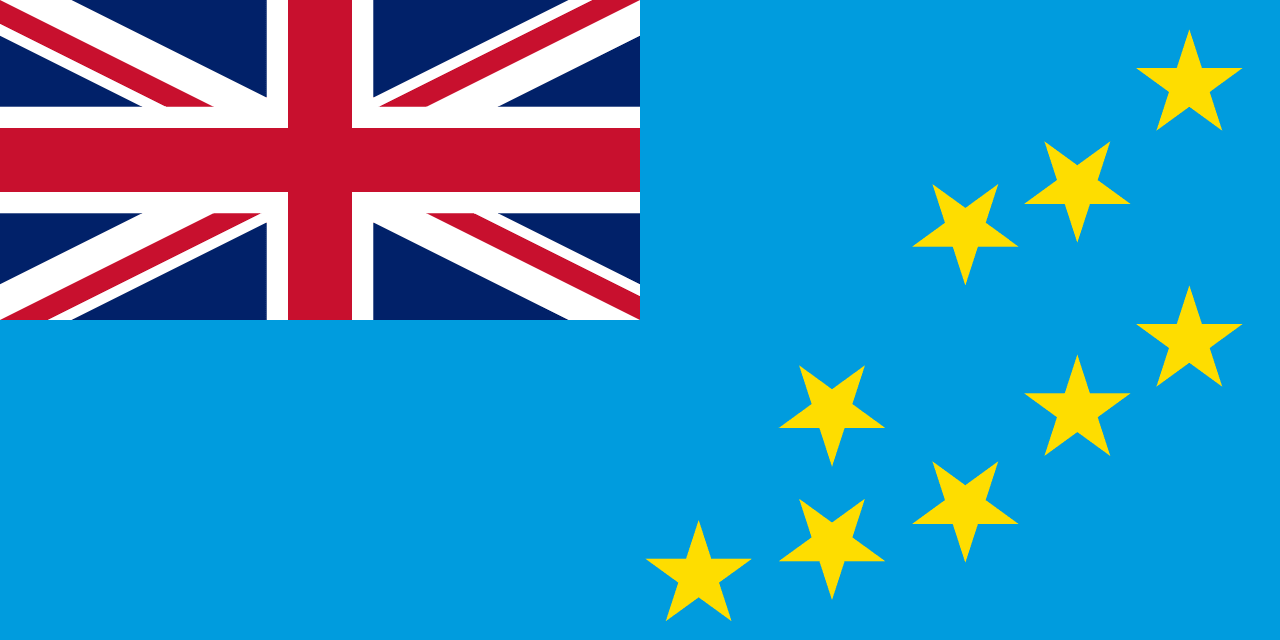
Tuvalu
Oceania
A light blue field with the Union Jack in the canton and nine yellow stars representing the nine atolls of Tuvalu, symbolizing the Pacific Ocean that surrounds the islands, the historical connection to Britain, and the geographical arrangement of the island nation in the central Pacific.